

|
|
|
1845
Variety 102a
Obverse 1.2: Repunched 8, High Date Downward Slope
Reverse C.2: Die Crack Through S(T)ATES, Rev of 1844 (A)
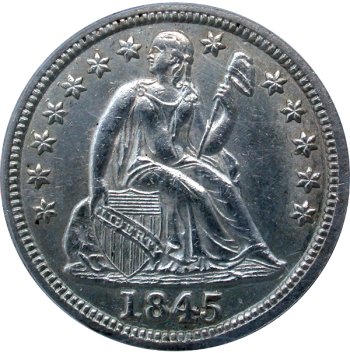
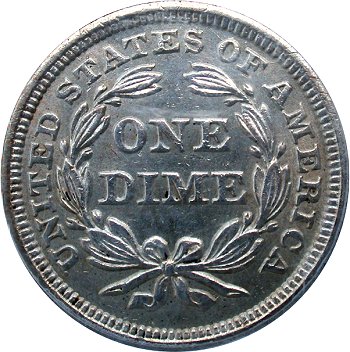
Obverse 1.2 Reverse C.2
Obverse Diagnostic Point(s) Reverse Diagnostic Point(s)
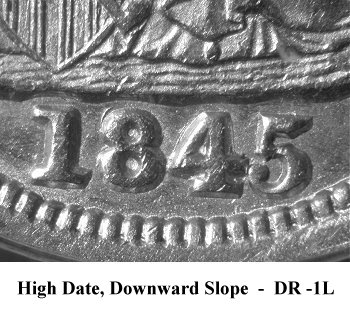
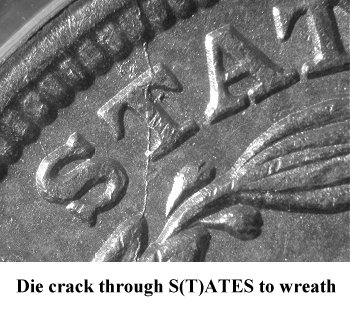
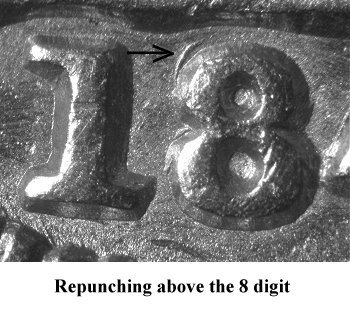

Comments: Greer defines three repunched date varieties for 1845. Two of the three repunched date varieties are easy to attribute and to locate. They are Variety 103 (Greer 101) and Variety 107 (Greer 103). Greer's third repunched 1845 date is labeled as Greer 102. Greer indicates, for this variety, that there is strong repunching above the 8 digit, but this repunching quickly fades away. Dr. Tim Cook first provided me with an example of Greer 102 for study during 1992. Since then, I was unsuccessful in locating another example. Fortunately, I purchased Tim's dime at the May, 2005 Heritage CSNS Signature sale. From the plate coin, I have the following comments and conclusion:
First, the obverse and reverse dies match the Obverse 1 and Reverse C.2 die pairing. There is no question that the plate coin is an early die state or very strong strike from the Obverse 1 die. Similarly, the reverse has the die crack through the first T in STATES and can be confirmed as the later die state Reverse C. The plate coin clearly shows repunching above the left upper loop of the 8 digit. There are also die chips around Stars 3, 4, 5, 8, 12 and 13. Fortin Obverse 1 within the Variety 101 listing, shows die chips around Stars 3, 4 and 5 or a subset of the die chips on this coin. The Fortin Variety 101 plate coin, while paired with Reverse A, is a bit less well struck than this plate coin. Fortin Variety 102 is a pairing of Obverse 1 and Reverse C with Reverse C being in a later die state that shows the die crack through S(T)ATES.
So when was the Variety 102a dime struck? Could the repunching over the 8 digit be visible only when the obverse strike is very bold? Could the Variety 102a variety be a bold strike die state of the Obverse 1 and Reverse C.2 die pairing? I believe this to be the case. The continuing difficulty in locating an example of this variety versus the general availability of other 1845 repunched varieties, would suggest a striking anomaly or die state phenomenon as a potential explanation. The repunching of the 8 digit on Obverse 1 could have been present on the die for a considerable time. However, the repunching is very shallow on the face of the die, requiring a strong strike to place an imprint to the planchet in the die press.
Plate Coin: G. Fortin Collection, PCGS EF45 - Ex. Cook